Except for USS Arizona, all of the battleships attacked at Pearl Harbor on 7 December 1941 were later raised, and saw the end of WWII. This three-part series will show their peacetime use and final fates after WWII.

(Recovered in 1945 during the occupation of Japan, this photo was taken by a Japanese airman and shows the opening seconds of the 7 December 1941 attack, and the location of the American battleships: 1) USS Nevada 2) USS Arizona 3) USS West Virginia 4) USS Tennessee 5) USS Oklahoma 6) USS Maryland 7) USS California and 8) USS Pennsylvania, out of the picture to the right. Two other warships are a) USS Vestal and b) USS Neosho. Circled are two Aichi D3A “Val” dive bombers of the strike force.)
USS Nevada (BB-36)
Commissioned in 1916, USS Nevada was the leadship of a two-ship class; the other being USS Oklahoma.

(USS Nevada before WWII.)
The attack
USS Nevada was at station F-8, the furthest northeastern end of Battleship Row. At 08:10, USS Nevada was hit by a torpedo on the port side between the two forward main turrets, causing a 4° list which was quickly counterflooded back to zero by damage control teams. At the same time, the engine department fired up the boilers. The torpedo hit was the only damage sustained during the first wave.
At 08:40, USS Nevada got underway (the only battleship to do so during the attack). Meanwhile the second wave began to appear. At 08:59, USS Nevada received signals to stop; at this time the battleship had just passed the damaged USS California, near the southern tip of Ford Island.
 (Taken from the Ford Island control tower, this picture shows USS Nevada on fire but in motion during the attack, the only battleship to get underway.)
(Taken from the Ford Island control tower, this picture shows USS Nevada on fire but in motion during the attack, the only battleship to get underway.)
Sailors ashore at Pearl Harbor observed that of the second wave, two-thirds of the planes peeled off their courses to attack USS Nevada as it tried to sortie. It was possibly a rare instance of the Imperial Japanese Navy breaking planning discipline, because the attack runs on USS Nevada appeared haphazard.
Five bombs hit the battleship in two minutes. One penetrated diagonally and exited through the hull, exploding in the water. A second hit forward and detonated. A third hit forward of the “A” main turret. A fourth actually struck the forward mast platform, then ricocheted down onto the base of the smokestack where it detonated. The fifth penetrated amidships and exploded near the mess deck, starting an internal fire. At the same time, a fire started in the forward superstructure.
As to not block the channel if the ship sank, USS Nevada ran aground near the drydocked destroyer USS Shaw. At 09:01, the magazines of USS Shaw exploded, with hot debris striking USS Nevada causing more problems. At 10:30, it was decided to have tugs push the battleship aground on the opposite side of the channel, as currents at the first grounding spot were swinging the stern back into the traffic lane.
 (Run aground, USS Nevada burns while the tug USS Hoga (YT-146) fights the fires. USS Hoga is currently a museum ship in Arkansas, the last warship of either fleet of the Pearl Harbor attack.)
(Run aground, USS Nevada burns while the tug USS Hoga (YT-146) fights the fires. USS Hoga is currently a museum ship in Arkansas, the last warship of either fleet of the Pearl Harbor attack.)
At the new position, the still-burning USS Nevada was teeter-tottering on a reef and slowly settling from the weight of the torpedo hit, the counterflooding, undrained firefighting water, and all four main magazines which had been flooded as a precaution. At 07:30 on 8 December, 24 hours after the attack, water had crept up to the level of the “bull ring” of the forward deck where the air intakes were located. At this point the ship lost electrical power and for all intents and purposes, that was the end of immediate damage control.

(USS Nevada’s rudder, which was damaged when the battleship ran itself aground.)
Repairs and WWII
Emergency repairs began in mid-December 1941. Patches were fitted over hull damage and the battleship was dewatered. On 12 February 1942 USS Nevada was again buoyant and on 18 February moved to a mooring point. By April 1942 the engines were again partially operational and later that month, USS Nevada left Hawaii, limping across the Pacific at 12 knots, arriving at Puget Sound Naval Shipyard, WA on 1 May 1942.

(The forward deck of USS Nevada a week or two after the attack, in mid-December 1941.)

(Internal damage to USS Nevada at Pearl Harbor. A Japanese bomb, which pieced the weather deck, detonated near the ship’s galley. This is the deck below that deck. The steel pillars supporting the overhead are buckled from the deck above being bowed down. The deck above had the opposite problem, with the stanchions being torn off their mounts as the deck bowed the other direction.)
USS Nevada underwent two overhauls during WWII. The first at Puget Sound repaired the Pearl Harbor attack damage.

(USS Nevada in drydock at Puget Sound Naval Shipyard during the summer of 1942.)
The ship then participated in the liberation of Alaska’s Aleutian Islands, the only part of the North American continent occupied during WWII. From mid-1942 to early 1944, a second, larger refit was done at Norfolk Naval Base, VA. USS Nevada then participated in the “Overlord” invasion of Normandy, the invasion of southern France, and the Okinawa operation where the battleship was hit by a kamikaze.
 (A WWII recognition chart from the Office of Naval Intelligence, showing the rebuilt USS Nevada. Most of the Pearl Harbor battleships ended WWII looking nothing like they did in 1941.)
(A WWII recognition chart from the Office of Naval Intelligence, showing the rebuilt USS Nevada. Most of the Pearl Harbor battleships ended WWII looking nothing like they did in 1941.)
USS Nevada after WWII
USS Nevada briefly served in the Japan occupation fleet in 1945. It had already been decided before WWII’s end that the vessel would not be retained in the peacetime navy, and USS Nevada was selected for the 1946 “Crossroads” nuclear tests.
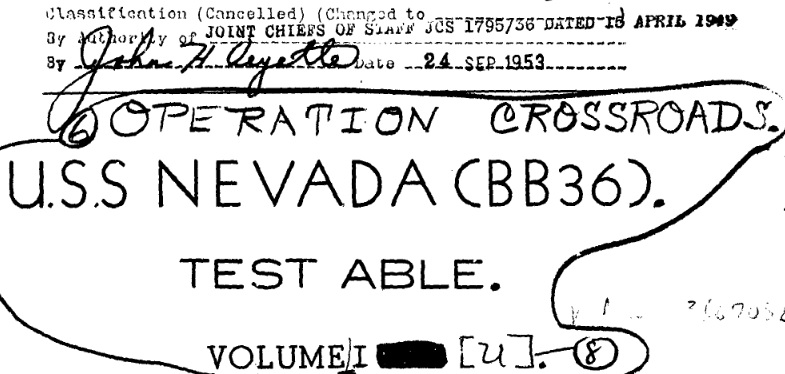

(A photo from a 1946 Popular Mechanics magazine showing USS Nevada being prepared for operation “Crossroads”. Some of the secondary AA guns are being extracted off the doomed battleship for reuse elsewhere.)
Test “Able” 1 July 1946
This was the airburst test. USS Nevada was the actual overall target ship the B-29 Superfortress was aiming for, and was painted blaze orange to identify it from the air.
 (The blaze orange USS Nevada the day before the “Able” test.)
(The blaze orange USS Nevada the day before the “Able” test.)
Despite this, the bomber missed the aim point and the 23kT atomic bomb detonated at 520′ altitude over the transport USS Gilliam (APA-57), about 615 yards aft of USS Nevada.
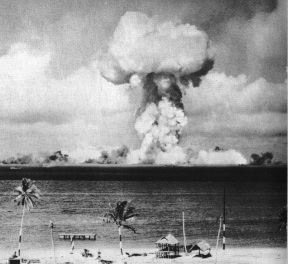 (The test “Able” detonation.)
(The test “Able” detonation.)
The immediate effect was the severe thermal pulse (momentary heat wave) followed by the blast wave, which arrived at 210° (port side aft) and a 45° down angle.

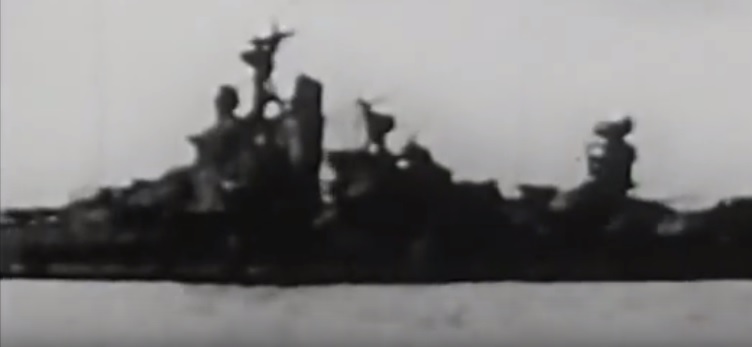
 (Three views of USS Nevada’s damage immediately after the “Able” blast, showing the forward main guns, amidships area, and aft main guns.)
(Three views of USS Nevada’s damage immediately after the “Able” blast, showing the forward main guns, amidships area, and aft main guns.)
Not surprisingly, USS Nevada was heavily damaged above the waterline. The most serious structural damage was aft, the descending blast wave actually peeled the weather deck away from the “Y” turret barbette, and dented downwards the weather deck aft as much as 1’4″. The next deck down was distorted off it’s support stanchions (ironically, much like had happened at Pearl Harbor in 1941) and was as much as 1′ out of position. A section 20’x16′ failed completely and was blown down into the ship.
 (The starboard aft quarter of USS Nevada after the “Able” test, showing heavy damage to the weather deck, crane, and stack.)
(The starboard aft quarter of USS Nevada after the “Able” test, showing heavy damage to the weather deck, crane, and stack.)
The seaplane crane was destroyed. The catapult was relatively intact but unusable as it was sloped downwards and jammed in position by the deck distortion.
The rear face of the superstructure was slightly dished inwards. All of the bridge windows were blown out, and the overhangs on the superstructure were bent out of position. The smokestack’s outer casing was completely ripped off the deck and crumpled around the inner tube, which in turn was crushed forward from port aft to starboard forward.
All of USS Nevada‘s radars were destroyed, either by having their antennas physically damaged, or by internal damage severing their power cable conduits. In most cases both happened, and with some of the radars the external antennas were ripped off the ship completely and blown into the lagoon. The searchlights, running lights, and the ship’s whistle were completely destroyed. The master compass was destroyed either by shock or electromagnetic pulse (EMP). The masts and yardarms were either completely ripped off or badly mangled.
Forward, the weather deck near the “A” turret was slightly dented inwards, following the lines of it’s support frames. Many of USS Nevada‘s liferafts were blown overboard. A small fire was caused by a cache of supplies the US Army had placed onboard to test the effects of the blast, but it burned itself out.
In the battleship’s interior, a section of berthing amidships was heavily damaged by shock and by the weight of decks above it being distorted. Several boiler casings ruptured from an overpressure traveling through the air intakes. All of the boilers had some degree of damage. Half of the ventilation lineup was damaged, again probably from ingesting the atmospheric overpressure.
The only hull damage below the waterline was a small leak in the skegs (the housing covering the roots of the propeller shafts) but it was minor and did not change the battleship’s draught or trim. It is not believed that the battleship’s bottom was bounced off the lagoon floor, rather that the dissipating shock wave traveling through the water rebounded back up.
There was only minor fire damage but much of the wooden decks were scorched and areas of paint facing the detonation were blackened.
The radiation was (by 1940s standards, anyways) negligible as much of the fallout from “Able” was blown into the upper atmosphere.
 (USS Nevada on 8 July 1946, one week after the “Able” detonation at Bikini.) (photo from Life magazine)
(USS Nevada on 8 July 1946, one week after the “Able” detonation at Bikini.) (photo from Life magazine)
The US Navy concluded that had it been a real-world scenario, USS Nevada would have been rendered unfit for combat but survived the blast, either in open ocean or pierside. It was estimated that 48 hours of repair time would have been needed to restore a minimum of propulsion and steering so that the battleship could move itself. This is extremely optimistic.
Test “Baker” 25 July 1946
This was the underwater test. It was the fifth atomic blast overall and the first time in history an atomic bomb was detonated in water. The damaged USS Nevada, slightly repaired inbetween the tests, was about 1,100 yards north of ground zero, with her starboard beam facing the detonation. This time, there was no chance of the blast “missing” it’s intended point, as the 21kT Mk3 atomic bomb was suspended beneath one of the target ships.
As the Mk3 detonated underwater, there was no thermal flash. There was however a massive hydrostatic shock which hit the target fleet beneath their waterlines.
The most notable effect of test “Baker” was a new phenomenon called “base surge”, a huge rolling wall of water droplets rolling outwards from Ground Zero, completely inundating all of the ships in it’s path. This was not predicted in any pre-test studies. Tons of massively radioactive water fell down on the target fleet, filling every nook and cranny with extremely potent fallout.
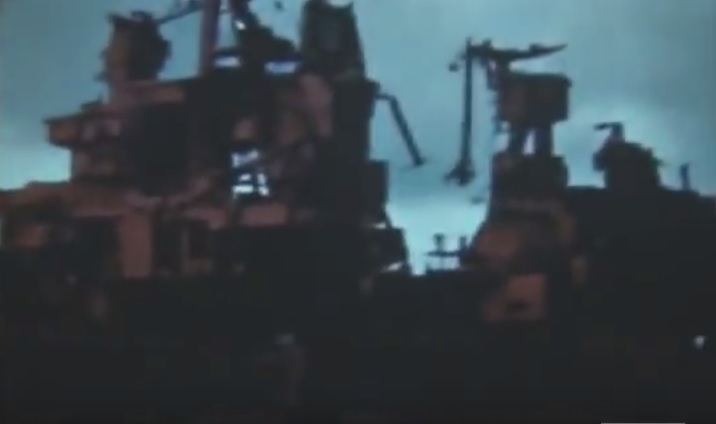 (USS Nevada’s port side amidships area after the underwater “Baker” test. The heavy damage to the battleship’s masts and yardarms had already been inflicted by the “Able” airburst.)
(USS Nevada’s port side amidships area after the underwater “Baker” test. The heavy damage to the battleship’s masts and yardarms had already been inflicted by the “Able” airburst.)
The voids in the ship’s double bottom were ruptured and flooded. The bilge drain tanks were filled with radioactive water. The rebuild of USS Nevada after the Pearl Harbor attack did not include check valves on these tanks, and once full they backed up radioactive water into the ship.
The main 14″ gun turrets were (like many battleships) held down only by gravity. The US Navy concluded that the shock wave momentarily bounced them up out of their seatings on the turret rings. The shell hoists in the two aft turrets were damaged by shock. One of the magazines had a few inches of standing water from a drain pipe which had ruptured above it. The battleship had shells and live 14″ propellant charges aboard for both tests; in both cases no damage was done to the ship’s ammunition. Surprisingly the secondary 5″ gun turrets made it through both tests with no damage whatsoever.
The Mk28 fire control radar had been repaired after test “Able”. During “Baker”, the antenna was distorted (probably from the weight of falling seawater) and the system was thus again inoperable. The internal circuitry of the SK radar (the external antenna having been damaged during “Able”) were damaged when seawater inundated the ship. All of USS Nevada‘s other radars had already been completely destroyed during “Able”. The RBK radio was damaged by being physically ejected out of it’s cabinet in the radio shack. It was later repaired. The TAJ radio had shock damage but was likewise repairable. Both radios had already lost their external antennas during “Able”.
The boilers, which had been damaged during “Able” and then repaired, were again damaged by shock. One of the diesel generators was damaged by saltwater flooding. This was progressive flooding after the test, and if damage control teams had been aboard the US Navy felt it would not have happened. The fuel was contaminated by seawater; presumably one or more fuel tanks had ruptured. The steering engine which turned the rudder was immersed in radioactive seawater and presumably damaged from the shock wave hitting the rudder. Surprisingly, the shaft seals, the shafts themselves, and the propellers showed no damage.
The fresh water system was contaminated by saltwater, either from the ship being inundated during “Baker” or from the decontamination vessels, or both. Because of the massive amounts of fallout, the radiation safety teams ordered that the ventilation system not be turned on, so it’s condition was unknown.
The weight gain caused by the flooding caused USS Nevada to add 6″ of draught, and the battleship took a 1 ¼° list.
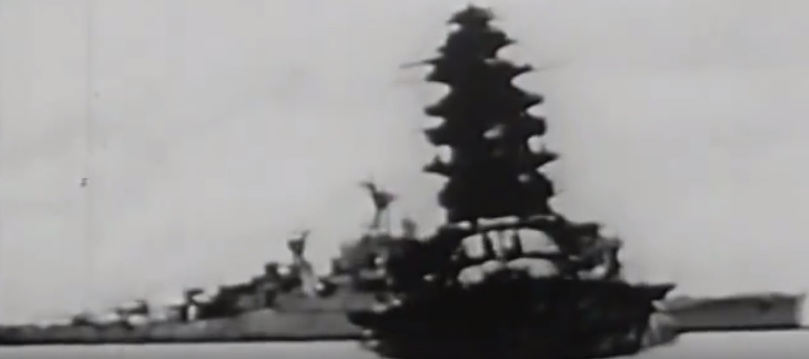 (USS Nevada behind the listing and sinking IJN Nagato after the “Baker” test.)
(USS Nevada behind the listing and sinking IJN Nagato after the “Baker” test.)
Damage above the waterline was minor. The crumpled smokestack was further damaged by the tons of radioactive seawater which fell onto the ship, and some external walkway overhangs were damaged from the same.
Unlike test “Able”, the radioactive contamination from “Baker” was massive. Efforts to decontaminate USS Nevada failed; first tugs sprayed the battleship with seawater from the lagoon (itself radioactive), next it was attempted to scrub the ship down with navy soap, and then lye. Fallout was poorly understood in 1946 and none of these ideas had any effect on the very severe radiation onboard. A particularly sobering fact was that some test pigs and rats inside one of the thickly-armored 14″ turrets were healthy immediately after the test but all dead from radiation sickness within days. Had the ship been manned at sea, the whole crew would have been fatally exposed.
The “Baker” test results for USS Nevada remained secret for many years, and were only released by President Clinton in April 1997.
USS Nevada after operation “Crossroads”
The third test at Bikini was cancelled due to the heavy contamination of the remaining target ships, and the limited number of atomic bombs in the national stockpile at that point. USS Nevada was towed back to Pearl Harbor later in 1946. On 29 August 1946, the battleship was formally decommissioned, now just an afterthought.
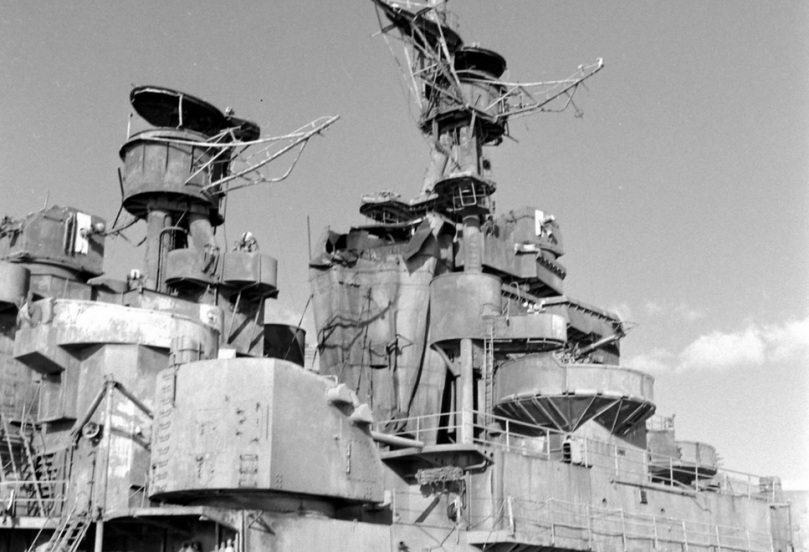 (The heavily damaged and radioactive ex-USS Nevada at Pearl Harbor in January 1948.) (photo from Life magazine)
(The heavily damaged and radioactive ex-USS Nevada at Pearl Harbor in January 1948.) (photo from Life magazine)
The ex-USS Nevada sat at Pearl Harbor throughout the rest of 1946 and all of 1947. The old battleship was no longer wanted, even in the reserve fleet, and in any case may have been beyond repair anyways. Part of the reason for retaining the damaged hull was political; the US Navy did not want a repeat of the media circus General Billy Mitchell caused in 1921 by bombing obsolete warships. The US Navy had actually planned to repair and reactivate some of the Bikini target ships to show that surface combatants were still relevant in the atomic age. With that now impractical due to the radioactivity from the “Baker” blast, some were retained for a while just to show that they were not sunk outright.
Efforts in San Francisco to develop a method of “cleansing” radiation off the badly damaged ex-USS Independence (CV-22) were a failure. It was decided for the similarly-radioactive ex-USS Nevada, not to scrap the hull as to introduce contamination into the USA’s civilian scrap metal stream. On 31 July 1948, the hull was towed to open water and sunk by 16″ gunfire from USS Iowa (BB-61) and air-dropped torpedoes.
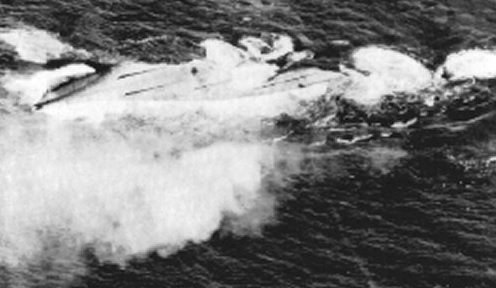 (The former USS Nevada capsizes and sinks on 31 July 1948.)
(The former USS Nevada capsizes and sinks on 31 July 1948.)
USS Arizona (BB-39)
Commissioned in 1916, USS Arizona was the second of a two-ship class, the first being USS Pennsylvania.
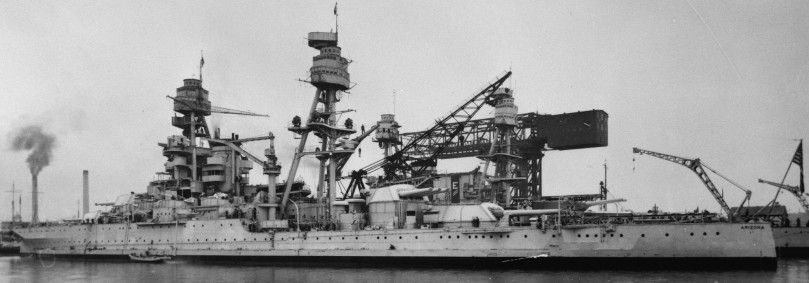 (USS Arizona in mid-1941, during the battleship’s final voyage to the mainland USA.)
(USS Arizona in mid-1941, during the battleship’s final voyage to the mainland USA.)
The attack
USS Arizona was at station F-7. Outboard was the repair ship USS Vestal (AR-4) which had come alongside on Saturday, for scheduled repairs to USS Arizona which were supposed to start Monday morning. In anticipation of the work scheduled for the next day, USS Arizona was particularly unprepared for battle that Sunday morning.
Four very heavy (1,757 lbs) armor-piercing bombs hit USS Arizona, along with at least one smaller bomb, and three near-misses which detonated in the water next to the battleship. Additionally the battleship was strafed by Japanese fighters. The exact sequence of the ship’s destruction is uncertain, but the final cause (massive explosion of the forward magazine) definitely is. At 08:10 the entire front end of the vessel exploded. The explosion killed 1,177 sailors instantly, more than half the total casualties of the whole attack. The most widely-accepted theory is that small black-powder blanks used on the seaplane catapults exploded first from a bomb hit forward, then setting off the main magazine. Due to the scope of the damage and massive death toll aboard, it will probably never be known for sure.
 (The only known color photo of USS Arizona’s explosion was taken by a US Army soldier who happened to be aboard USS Solace (AH-5) that morning.)
(The only known color photo of USS Arizona’s explosion was taken by a US Army soldier who happened to be aboard USS Solace (AH-5) that morning.)
It was initially thought that three torpedoes hit USS Arizona, then one, and now most historians believe none.
An enduring misconception is that a bomb went straight down the ship’s smokestack and detonated inside. This error was initially stated in the 19 December 1941 report of Rear Admiral Walter Anderson, based on eyewitness statements. During the salvage, the funnel cap (an armored sieve inside the stack) was found intact, disproving this theory. One of the bomb hits was center amidships, and from the vantage point of USS Tennessee, it may have appeared to go straight down the smokestack.
The forward half of the ship, from the bridge to the anchor capstans, collapsed down in on itself after the explosion and was completely destroyed. This total structural failure caused the superstructure citadel and foremast to fall forward under their own weight. The aft half of the battleship submerged on an even keel with about 4′ of water over the deck. One of the first bomb hits holed USS Arizona‘s fuel tanks causing oil to gush out into the harbor, which was then ignited by the explosion.
Salvage
At Pearl Harbor, it was immediately obvious that USS Arizona was a total loss. The wreckage above the waterline was still on fire, fed from the leaking fuel, and the fires were not extinguished until 9 December 1941.
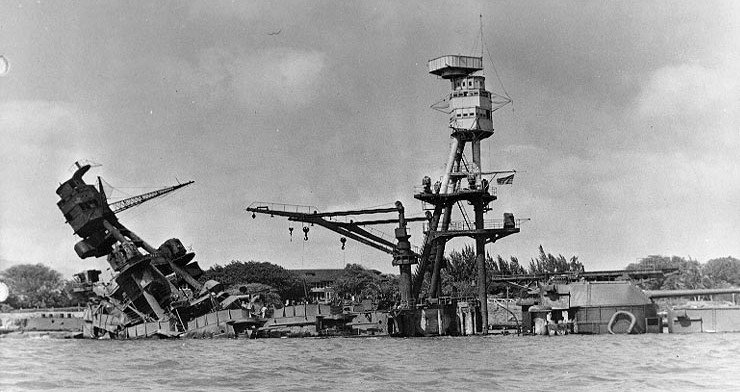 (The wreck on 12 December 1941, five days after USS Arizona sank. The entire forward half of the ship collapsed in on itself.)
(The wreck on 12 December 1941, five days after USS Arizona sank. The entire forward half of the ship collapsed in on itself.)
In late January 1942, salvage work began. Some easy to lift items, such as the seaplane catapults, were removed. In early February, a floating derrick came alongside and work commenced on removing the aft mast structure. After this was accomplished, work started on the challenging removal of the foremast. Because it had toppled forward, it was more dangerous to remove as it would slide down as it was separated from the collapsed superstructure. The burned-out top of the foremast was removed in early May 1942.
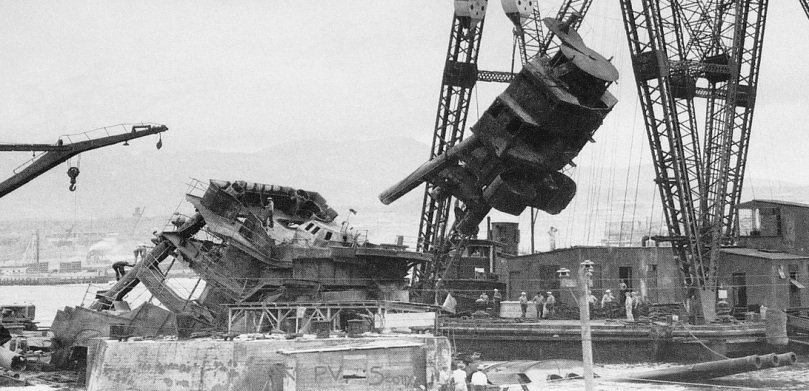 (The control position atop the forward tripod mast is removed during the summer of 1942.)
(The control position atop the forward tripod mast is removed during the summer of 1942.)
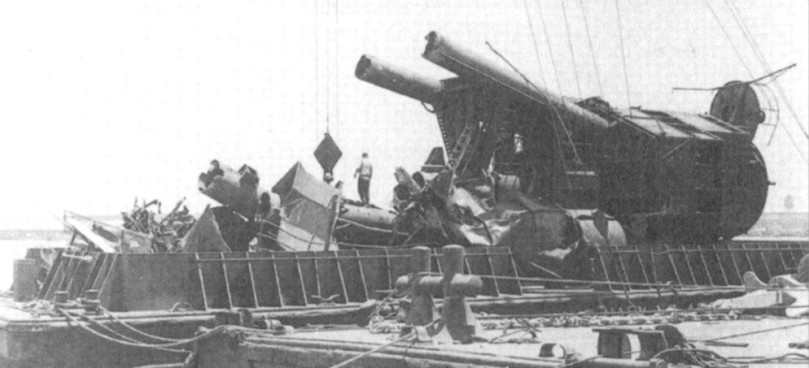 (Wreckage of the battleship’s mast structure being barged away on 6 May 1942.)
(Wreckage of the battleship’s mast structure being barged away on 6 May 1942.)
Work continued throughout the summer and fall of 1942. In November 1942, the armored superstructure was removed. By 7 December 1942, the first anniversary of the attack, very little of the above-decks structure was left.
As the country was now at war, any usable weaponry was needed and a main objective of the USS Arizona salvage was to recover the battleship’s guns. A few light machine guns which survived the sinking above water were removed in January 1942. Several of the secondary 5″ guns were removed from the wreckage shortly thereafter.
After cleaning and refurbishment, four of USS Arizona‘s Mk13 5″ guns (the open weatherdeck AA guns) were recovered and used in a Navy-manned ashore AA battery on Ford Island. They saw no further combat and were scrapped after WWII.
Two Mk14 5″ guns (the semi-enclosed amidships guns) were recovered; it is not known for certain what if anything they were used for.
Of the main armament, the six Mk12 14″ guns in the two aft turrets were recovered, as were the three in the “B” turret. It was judged impossible to recover the three in the “A” turret and they remain on the wreck today. After the guns in the aft turrets were removed, the entire turrets were lifted off the wreck to recover the armor plating. In the “B” turret, the remains of the turret itself were left in place.
 (Salvage of the aft main armament on 25 February 1942. The “X” turret has all three guns already removed, while the “Y” turret still has one. The remains of the stern seaplane catapult are at the top of the photo. These salvaged guns were later turned over to the US Army. This photograph, for whatever reason, remained classified by the US Navy well after WWII and was only publicly released by President Reagan in 1983.)
(Salvage of the aft main armament on 25 February 1942. The “X” turret has all three guns already removed, while the “Y” turret still has one. The remains of the stern seaplane catapult are at the top of the photo. These salvaged guns were later turned over to the US Army. This photograph, for whatever reason, remained classified by the US Navy well after WWII and was only publicly released by President Reagan in 1983.)
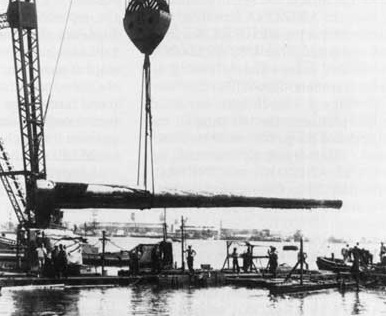
(One of the main guns from “B” turret being extracted in May 1942. The three guns from this turret were retained by the US Navy and used as spares for other battleships.)
In 1943 custody of six Mk12 guns was transferred to the US Army, which intended to use salvaged weapons of sunken Pearl Harbor battleships in a series of coastal defense positions on Oahu. These were to be named after battleships damaged in the attack (but the actual guns need not come from the ship the battery was named for). USS Arizona‘s guns were assigned to Battery Pennsylvania and Battery Arizona, both to be manned by the 16th Coastal Artillery Regiment.
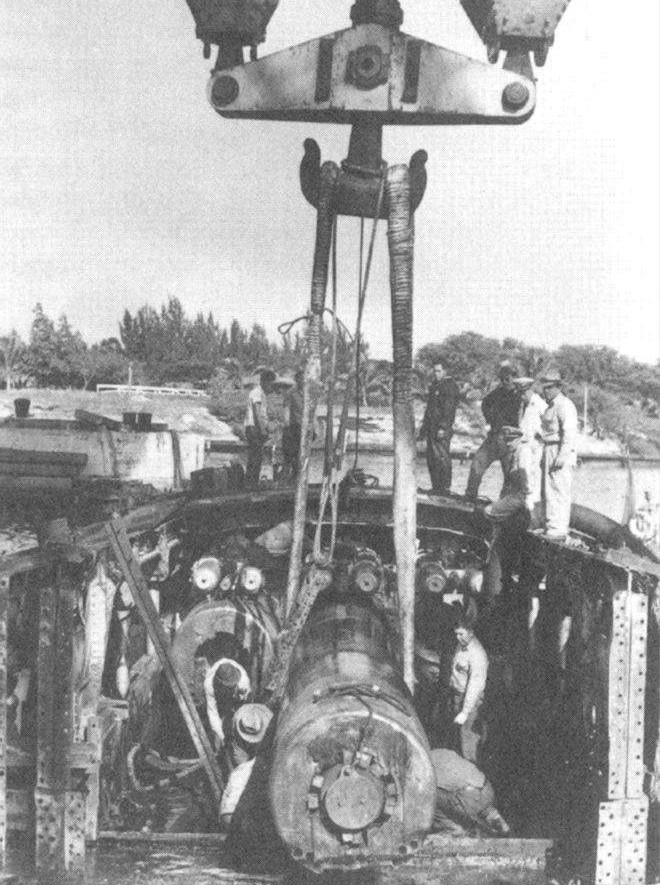
(One of USS Arizona’s Mk12 guns being extracted from a disassembled turret in 1942.)
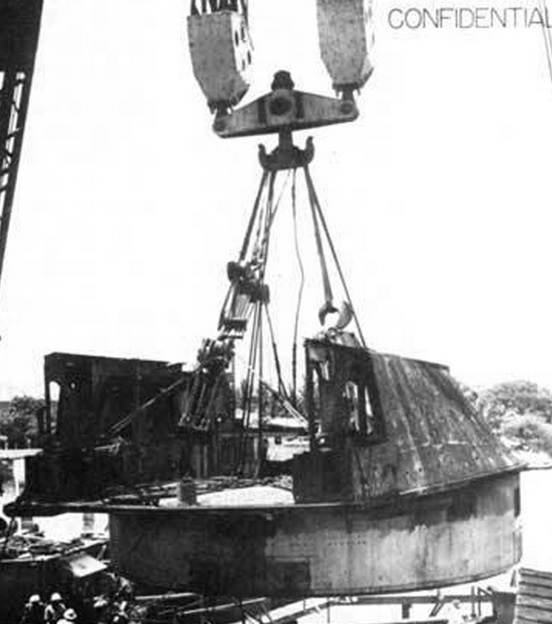
(The armor shell of the “X” turret being lifted off the wreck. This armor was later recycled for use in the US Army coastal ‘Battery Pennsylvania’ facility.)
Construction of these facilities was harder than anticipated and slipped in priority after the Midway engagement, when it was clear Japan would never again threaten an actual invasion of Hawaii.
Three guns, along with armor from the two aft turrets, were used at Battery Pennsylvania at the Makapu position on eastern Oahu, adjacent to the Kaneohe Bay Marine Corps Base. An Army SCR-296 radar was also sited there. Battery Pennsylvania made it’s first (and last) test firing on 14 August 1945 – which was of course, also the day the Emperor announced Japan’s surrender. The facility was demanned in 1946 and torn down in 1948-1949. For some time, the remains (including a concrete ring where the emplacement had been) were open but since 9/11 public access is restricted.
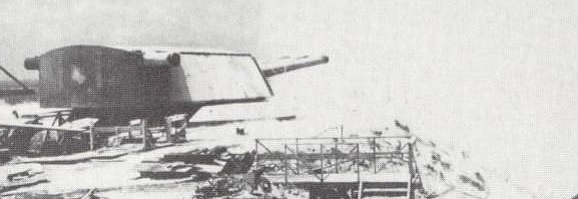
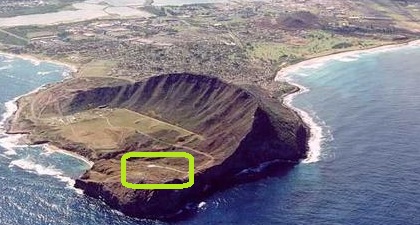
(The US Army ‘Battery Pennsylvania’ making it’s first and last test firing in 1945, and the former location in December 2015.)
Battery Arizona was to have been sited at Kahe Point on the west side of Oahu. Work was halted in July 1945 and the facility was never completed. Today a landfill covers the area.
The three Mk12 guns extracted from the “B” turret were used as spares for USS Arizona‘s sister ship, USS Pennsylvania.
Some of the material recovered in the 1942-1943 salvage still exists. Parts of USS Arizona‘s superstructure, aft mast, and crane kingposts were dumped in a field at Waipio Point and forgotten about. This material remains there today.

Legacy of USS Arizona
USS Arizona is one of three American battleships to have been lost to enemy action; the others being USS Maine in 1898 and USS Oklahoma also at Pearl Harbor in 1941.

(The wreck of USS Arizona after the end of the Korean War but before the monument was built. At the time, there was a simple platform for annual ceremonies and a few leftover structures from the WWII salvage. The fore and aft ends of the wreck (which is recognized as a military cemetery) were roped off to prevent boats from accidentally crossing over.)
The ensign USS Arizona flew during the attack was recovered in early December 1941 and presented to the state of Arizona, where it is now displayed in the state capitol building. During the 1942-1943 salvage, the wardroom silver service was also recovered, and likewise given to the state of Arizona.
A misconception is that USS Arizona is “forever in commission”. This is untrue, after the attack USS Arizona was placed “in ordinary” (an archaic naval term meaning neither active nor in reserve, but still on the Navy rolls). On 1 December 1942, the US Navy quietly struck the ship’s name off the rolls.
US Navy warships passing the monument (completed in 1962) are required to render it a salute. Foreign warships visiting Pearl Harbor are not required to do so, but many do.

(The modern Chilean attack submarine Simpson renders a salute to the monument.)
There has not been a USS Arizona since 1941. There is a widely-circulated belief in the USA that no ship can ever again be named USS Arizona; this is untrue, there is no such restriction. A variation is that no ship can receive the name until the last of the survivors passes on; this is also untrue but is so widely believed in the US Navy that it has somewhat acquired the status of fact. As of late 2015 only eight survivors are still alive, and it is rumored that an upcoming nuclear submarine might be named USS Arizona.
USS West Virginia (BB-48)
Commissioned in 1923, USS West Virginia was the last of three Colorado class battleships. In terms of age, USS West Virginia was the newest battleship based in Hawaii in 1941.

(USS West Virginia before WWII.)
The attack
USS West Virginia was at station F-6B, tied up outboard of USS Tennessee. USS West Virginia took a tremendous pounding during the attack, perhaps second only to USS Oklahoma.
The battleship took six torpedo hits; all Japanese Type 91 models. Four hit the amidships area, one hit the rudder, and one hit an area above the armor belt as the ship was already listing. The first two torpedoes hit simultaneously at 07:57. USS West Virginia was hit by two heavy armor-piercing bombs, plus a third near-miss which detonated in the water alongside, and two more bombs which were duds.
The battleship quickly took a severe list, recorded at 28° which was as far as the battleship’s inclometer could register. Ammunition for the secondary 5″ guns exploded, destroying that gun deck and starting fires amidships and in the signal bridge at 07:58. The amidships fire weakened the steel sufficiently that the top 5″ gun deck partially into the casemate deck beneath it. The two seaplanes on the catapult above “X” turret started on fire. The steering engine was destroyed from the shock of the rudder being blown off.
Between 08:00-08:09, the list began to correct from a combination of counterflooding, and from the fact that so much seawater was being ingested that it was filling up both sides of the ship. A small garbage scow, YG-17, came alongside and helped fight the topside fires, buying time for the below decks damage control. It’s possible that this small garbage craft helped USS West Virginia avoid the same fate as USS Oklahoma.
 (The sunken USS West Virginia on 10 December 1941, three days after the attack, heaved up against USS Tennessee. USS West Virginia had been one of the few Pacific Fleet battleships equipped with radar before WWII (the CXAM-1 set on the forward mast) so the battleship’s sinking was especially unfortunate for the US Navy in 1941.)
(The sunken USS West Virginia on 10 December 1941, three days after the attack, heaved up against USS Tennessee. USS West Virginia had been one of the few Pacific Fleet battleships equipped with radar before WWII (the CXAM-1 set on the forward mast) so the battleship’s sinking was especially unfortunate for the US Navy in 1941.)
The order to abandon ship was given sometime between 08:45 and 09:00. By this time, USS West Virginia was already resting on the seafloor at a 3° port angle, with about 4′ of water over the deck. This resulted in further damage as the water was coated with burning fuel from USS Arizona. As the ship settled into the water, it heaved to starboard, pinning USS Tennessee against the mooring quays.
Repairs and WWII
Damage to USS West Virginia was massive and the repair of the battleship was one of the most extensive such tasks the US Navy had ever undertaken at that time.
In mid-December 1941, the main priority was getting USS Tennessee extracted from it’s position inbetween the quays and USS West Virginia. Once this was accomplished, recovery of USS West Virginia could begin.
Employees of the Pacific Bridge Company were called in to help raise the wreck. Two 50′-tall wood and concrete slab patches were built, one covering all the amidships torpedo holes and a smaller one covering the foremost torpedo hit. The hole in the hull left by the missing rudder post was not patched, rather the hull was sealed off internally aft and blown with compressed air. The patches were mounted to the wreck with steel hooks, latching into holes cut into the ship by scuba welders. The hull was mangled so bad that in some places it was 14″ offline; but the patches were ingeniously designed to follow both the hull’s natural form and deformations from the attack. Each patch section had two heavy steel rods at the bottom to take the weight once the battleship was drydocked.
 (Wooden bracing points for the patches installed on 16 March 1942.)
(Wooden bracing points for the patches installed on 16 March 1942.)
Before USS West Virginia could be raised, it had to be lightened. The battleship was 70% fueled during the attack and 800,000 gallons of fuel was pumped off. This was a delicate job, as the port and starboard fuel tanks had to be alternated, calculating in seawater remaining inside the hull, to avoid the wreck capsizing as it lightened up. Next the 16″ main gun ammunition was offloaded, this was done by cutting vertical shafts down to the magazines and using machines called “tuggers” (pneumatic winches). The 5″ and smaller ammunition was offloaded by hand. The final (and unpleasant) task was the removal of 70 tons of food, which had been rotting underwater since the attack. Finally, the interior was cleared of toxic H²S gas which accumulated from rotting food and wood. The level of hydrogen sulfide was immense, in some compartments 1 part per 5.
In February 1942, four Mk13 5″ AA guns removed from USS West Virginia were installed ashore at West Loch, a reserve anchorage bay west of the main Pearl Harbor base. They saw no use during WWII and were scrapped after the war.
 (USS West Virginia in mid-June 1942. All of the port side secondary guns have been removed and workers are cutting away sections of the superstructure to lighten the battleship.)
(USS West Virginia in mid-June 1942. All of the port side secondary guns have been removed and workers are cutting away sections of the superstructure to lighten the battleship.)
As the battleship lightened, work could begin on the interior. USS West Virginia‘s insides were completely covered in a jelly of mud, ash, and congealed fuel oil from USS Arizona. At some points the muck was waist-deep. This had to be removed; it was estimated 40,000 gallons of loose oil was taken off. For the ship’s electric motors, it was decided the interior was too messy to properly clean them so they were logged, removed, cleaned ashore, and then reinstalled. Of the electric motors, transformers, etc on board not destroyed by blast or fire; 100% were successfully reconditioned.
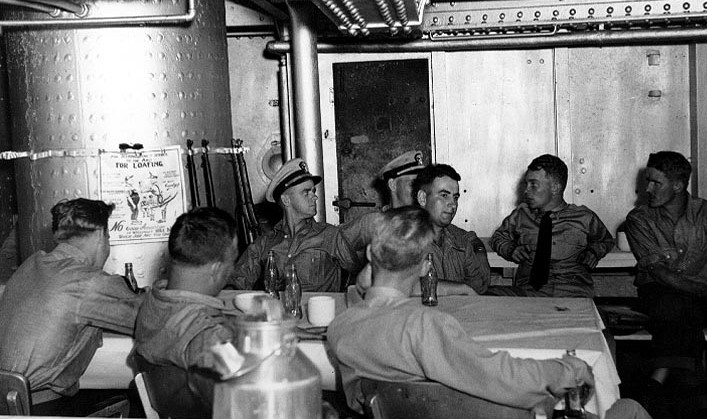 (USS West Virginia’s temporary wardroom in 1942. M1903 Springfield rifles are on the bulkhead.)
(USS West Virginia’s temporary wardroom in 1942. M1903 Springfield rifles are on the bulkhead.)
On 17 May 1942, USS West Virginia was refloated, being dewatered by 440v Ponoma & Peerless well pumps. Drydocking the ship as fast as possible was obviously important, however the main battleship drydock at Pearl Harbor needed to be kept free for any aircraft carriers that might be damaged in combat. To use the smaller Drydock #1, more lightening had to be done. Everything not necessary to maintain structural integrity of the ship was removed. USS West Virginia was successfully drydocked on 9 June 1942, just a little over half a year past the attack.
 (One of the patch sections being extracted off in drydock in late 1942.)
(One of the patch sections being extracted off in drydock in late 1942.)
In drydock, the patches were removed and the hull restored to watertight integrity. The propulsion and steering systems were repaired enough to make the battleship mobile again. On 7 May 1943, after nearly a year in drydock, USS West Virginia sailed to Puget Sound Naval Shipyard, WA for permanent repairs.
 (A quite unusual sight: USS West Virginia with no secondary guns, tripod masts, boats, or catapults; all removed for the 1943 voyage to Puget Sound. The US Navy was not entirely confident of the battleship’s condition and wanted to give it as much reserve buoyancy as possible for the trek across the Pacific Ocean.)
(A quite unusual sight: USS West Virginia with no secondary guns, tripod masts, boats, or catapults; all removed for the 1943 voyage to Puget Sound. The US Navy was not entirely confident of the battleship’s condition and wanted to give it as much reserve buoyancy as possible for the trek across the Pacific Ocean.)
Like most of the other Pearl Harbor victims, USS West Virginia‘s appearance was completely changed at Puget Sound. Other than the main 16″ guns, all of the armament was upgraded and changed. New radars were added, and the superstructure completely altered.
The initial refit time estimate when the crippled USS West Virginia limped into Puget Sound in mid-1943 was six months. Because of the scope of the damage, and the degree the ship was upgraded, this was greatly exceeded and the “new” USS West Virginia did not complete sea trials until August 1944. That September, USS West Virginia returned to Pearl Harbor.
 (The totally rebuilt and reconfigured USS West Virginia in July 1944.)
(The totally rebuilt and reconfigured USS West Virginia in July 1944.)
USS West Virginia gave excellent service during what remained of WWII, participating in the Leyte Gulf, Iwo Jima, and Okinawa battles. The battleship was part of the surrender task force in Tokyo Bay, and members of the battleship’s band performed the national anthem aboard USS Missouri.
Efficiency of restoring USS West Virginia
The ship and crew gave excellent service once back in the fight. That said, from a textbook perspective, the decision to repair rather than scrap was questionable. Of the 46 months the USA was involved in WWII, USS West Virginia only participated in the last 11 months, when the US Navy’s supremacy was already established anyways. Repair of the old battleship was tremendously expensive, both in dollars and man-hours.
USS West Virginia after WWII
USS West Virginia participated in operation “Magic Carpet” runs; the return of American troops abroad to the USA. The first run with 270 passengers was made in September 1945, and the second with 2,100 passengers in November 1945, following a port visit to San Diego, CA in October. USS West Virginia spent the first peacetime Christmas moored at San Pedro, CA.
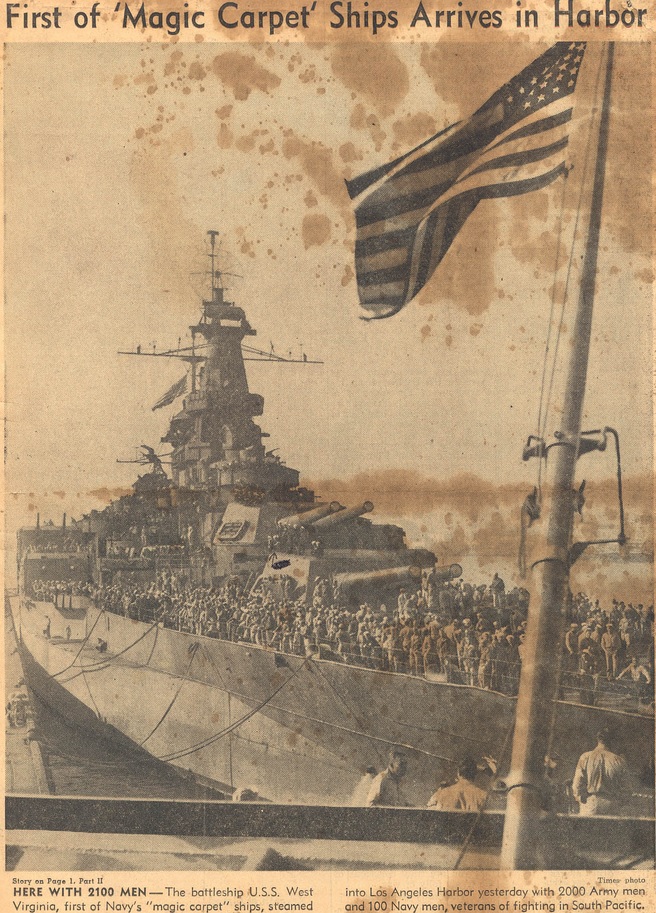 (From the 14 November 1945 Los Angeles Times newspaper.)
(From the 14 November 1945 Los Angeles Times newspaper.)
The US Navy had already decided that no Colorado-class unit would be retained in active service and furthermore, USS West Virginia was selected as the first Pacific Fleet battleship overall for decommissioning. On 11 October 1945, while USS West Virginia was still undertaking the “Magic Carpet” missions, the captain and crew were notified of the decision.
 (The crew of USS West Virginia in San Diego, CA in October 1945, shortly after the captain told the crew that their battleship would be the first to decommission after WWII.)
(The crew of USS West Virginia in San Diego, CA in October 1945, shortly after the captain told the crew that their battleship would be the first to decommission after WWII.)
Given the immensely expensive repairs which had concluded just a year before, this would seem counter-intuitive, but was actually logical. The US Navy felt that USS West Virginia was the least-likely battleship to have any alterations from the last shipyard records, and it was intended to be a guinea pig for deactivations of other battleships coming up.
On 12 January 1946, USS West Virginia moored at Bremerton, WA which would end up being her final home.
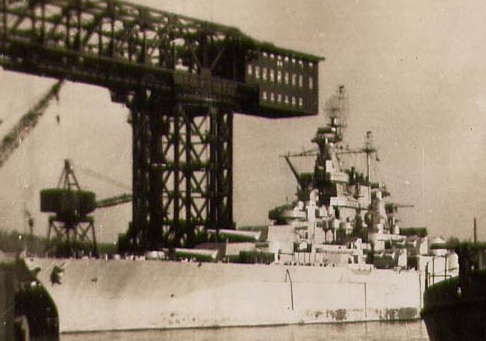 (USS West Virginia at Bremerton in early 1946.)
(USS West Virginia at Bremerton in early 1946.)
In early June 1946, USS West Virginia was placed in “Ready-10” status, meaning that ten days would be required to make the ship again seaworthy. By mid-month, the battleship was 83% deactivated and prepared for mothballing; and at this point was no longer really a combat-ready warship. The crew was gradually being whittled down as wartime enlistments ended, and the final skeleton crew at Bremerton was only the captain, 6 officers, and 66 enlisted sailors.
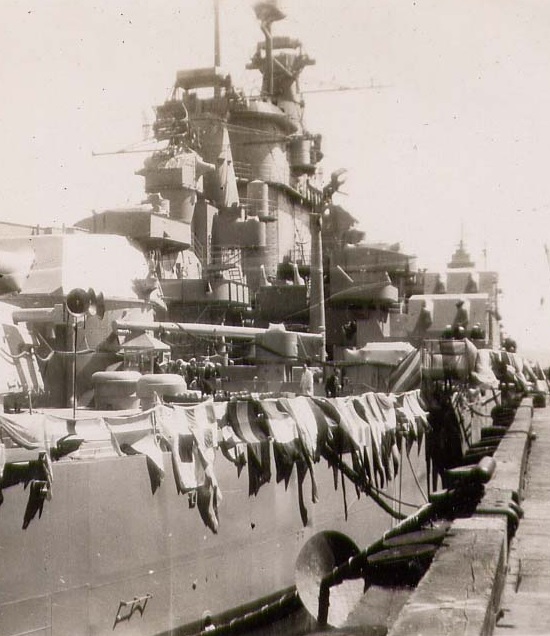 (USS West Virginia dressed for the decommissioning ceremony in June 1946.)
(USS West Virginia dressed for the decommissioning ceremony in June 1946.)
 (The decommissioned USS West Virginia being mothballed in 1946. Some of the small-caliber AA guns have been removed, others are covered in tarps. The large black boxes are most likely inclining ballasts; these could be slightly repositioned to keep the drydocked battleship even as equipment was stripped off and tanks drained.)
(The decommissioned USS West Virginia being mothballed in 1946. Some of the small-caliber AA guns have been removed, others are covered in tarps. The large black boxes are most likely inclining ballasts; these could be slightly repositioned to keep the drydocked battleship even as equipment was stripped off and tanks drained.)
On 18 June 1946, USS West Virginia was formally decommissioned into reserve. Throughout the rest of the 1940s, the ship sat quietly at Bremerton.
 (USS West Virginia mothballed at Bremerton in 1948.)
(USS West Virginia mothballed at Bremerton in 1948.)
At some point in the 1950s (probably during the Korean War) the mothballed WWII battleship was towed to the anchorage of Hall Brothers, a former shipyard of the sail & wood era which had since gone bankrupt. The US Navy used this anchorage as an “overflow lot” for mothballed warships at Bremerton.
 (The mothballed USS West Virginia at the Hall Brothers anchorage in the 1950s. By then most of the radar antennas had been removed and the 40mm AA guns covered by “igloos”.)
(The mothballed USS West Virginia at the Hall Brothers anchorage in the 1950s. By then most of the radar antennas had been removed and the 40mm AA guns covered by “igloos”.)
USS West Virginia was never again returned to service. By the late 1950s, it would have once again taken a major effort to reactivate the ship as it was fairly well-rusted. In 1958, the US Navy notified Congress it no longer wished to retain the three Colorado-class battleships in reserve and on 1 March 1959, USS West Virginia was stricken off the reserve rolls.
 (Associated Press photo)
(Associated Press photo)
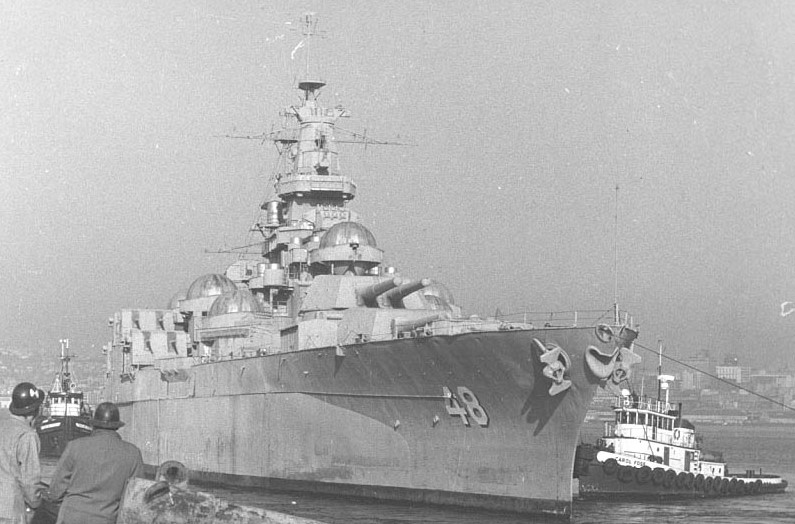 (1 March 1959, the last movement of the ex-USS West Virginia as tugboats tow the battleship from the reserve anchorage to Todd Shipyards.)
(1 March 1959, the last movement of the ex-USS West Virginia as tugboats tow the battleship from the reserve anchorage to Todd Shipyards.)
The NY-based company Union Minerals & Alloys won the hull at auction and in turn sold it to Todd Shipyards in Washington state. The battleship was broken apart for scrap throughout the summer of 1959.
 (A shipbreaker cuts apart the ex-USS West Virginia in 1959.)
(A shipbreaker cuts apart the ex-USS West Virginia in 1959.)
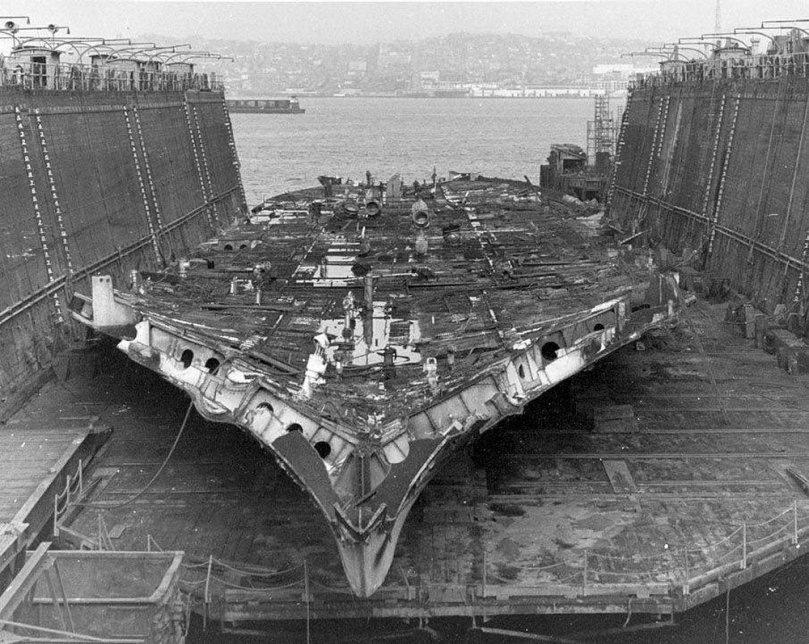 (Between the time the first bombs fell on Pearl Harbor in late 1941, and this picture in late 1959, USS West Virginia had only spent 2 years in active use; the other 16 years being sunk, under repair, or in mothballs.)
(Between the time the first bombs fell on Pearl Harbor in late 1941, and this picture in late 1959, USS West Virginia had only spent 2 years in active use; the other 16 years being sunk, under repair, or in mothballs.)

[…] Source: Pearl Harbor battleships after WWII: part I […]
LikeLike
Concerned you forgot the USS
Utah….also attacked…..and attempted to be “righted” but failed. Still in place.
LikeLiked by 1 person
I believe USS Utah had already been downrated to a target ship before the attack.
LikeLike
My cousin Keth Tipsword was killed serving on the West Virginia on Dec 7th, 1941. I made it a part of my Bucket List to see the Arizona memorial and see Keith’s name on the list of people who fought and died during the attack! Every American should visit Pearl Harbor and view the monuments dedicated to the brave people who fought in WWII. I was lucky to be on the Battleship Missouri on July 4th, 2016 during Rimpac, Ii was awesome God Bless the United States of America!
LikeLiked by 1 person
An outstanding series that deserves more viewers!!
LikeLiked by 1 person
Reblogged this on Pacific Paratrooper and commented:
A series here that deserves attention!
LikeLiked by 1 person
Reblogged this on Lest We Forget and commented:
Remembering December 7th 1941
LikeLike
Fascinating entry.
LikeLiked by 1 person
[…] Source: Pearl Harbor battleships after WWII: part I […]
LikeLike
Reblogged this on Random Ramblings; Myriad Musings and commented:
Today, 7 December, marks the 74th anniversary of the attack on Pearl Harbor. This is part one of a fascinating, 3-part series documenting what happened to the ships at Pearl Harbor.
LikeLiked by 1 person
Wow, I can’t imagine the amount of research that went into this piece. Great information. –Curt
LikeLiked by 2 people
A fascinating, yet sad history, GP. Much appreciated.
LikeLiked by 1 person
Reblogged this on Janet’s thread.
LikeLike
Nice rehash of details and great pictures but this article has several questionable statements. The Arizona and the Utah were never raised. Also the article questions the value of repairing the West Virginia obviously forgetting that at the Battle of the Surigao Strait south of Leyte Gulf leading the battle line with her new radar “West Virginia fired her eight 16-inch (406 mm) main-battery guns at a range of 22,800 yd (20,800 m) and struck the leading Japanese battleship with her first salvo. Five of her first six salvos struck Nishimura’s ships; she fired a total of 16 salvos.” Had these ghosts raised from the bottom of Pearl Harbor not been there to stop the Japanese Southern Force the landings at Leyte Gulf would have been a terrible disaster, particularly since the Yamato coming from the north almost got through to the anchorage. If those two forces had linked up we would have had a real mess. The war would have been prolonged greatly. The effectiveness of those older battleships at Surigao Strait is one of the great ironies of WWII, an example of karma if you will.
LikeLike
Hi there, thank you for the feedback. I never said that the Arizona or Utah were raised, perhaps you read it wrong? As far as the West Virginia, it did fight well with Olendorf’s line in the Suriago Strait but was basically overkill on top of the other battleships already there; for example Mississippi only had to fire once the whole battle and another one of the battleships (I can’t remember which) never even fired at all. Anyways thank you for the feedback!
LikeLike
It is very useful to know every events of each warships l
LikeLiked by 1 person
Just a reminder. US ships didn’t have A,B,X,Y turrets. That’s British. US ships designate them 1,2,3,4.
The “Ghosts of Pearl Harbor” at Surigao Straight is a wonderful, even romantic thought many hold onto. But the OOB’s were almost unnecessary. The southern force of the IJN had already been decimated by USN DD’s and Cruisers. The Fuso was sinking, Yamashiro was heavily damaged before the first OBB salvo left the guns. A couple more DD torpedoes and she would have been going the same way as Fuso.
LikeLike
You forgot about a second ship which is still in the water with over 50 souls still on board, to include a father and daughter. The USS Utah. Read about the father and daughter. Very interesting. https://www.kitv.com/story/30673151/twin-sister-visits-babys-watery-grave-at-uss-utah-memorial
LikeLike
The USS California (BB-44) was raised. After the Battle of Midway, survivors of the USS Yorktown (CV-5), including my uncle Donald Wilson, were taken to Pearl Harbor where the electricians were assigned to help bake out an engine of the battleship California. The battleship had been sunk when Pearl Harbor was attacked, but had been raised and overhaul had begun. When two engines were operable, the ship limped to the west coast where overhaul was completed at the Puget Sound Navy Yard. #wilsonbrothersofdallascountyiowa #dallascountyfreedomrock http://bit.ly/LeorasLetters
LikeLike
very interesting info on two of the survivors of the pearl harbor attack! i am 75, and still, stories and info like these articles make me wonder how well the guys in the armed forces did their jobs, enough to come back to the usa and give me my chance at growing up a american ! thank due !!
LikeLiked by 1 person